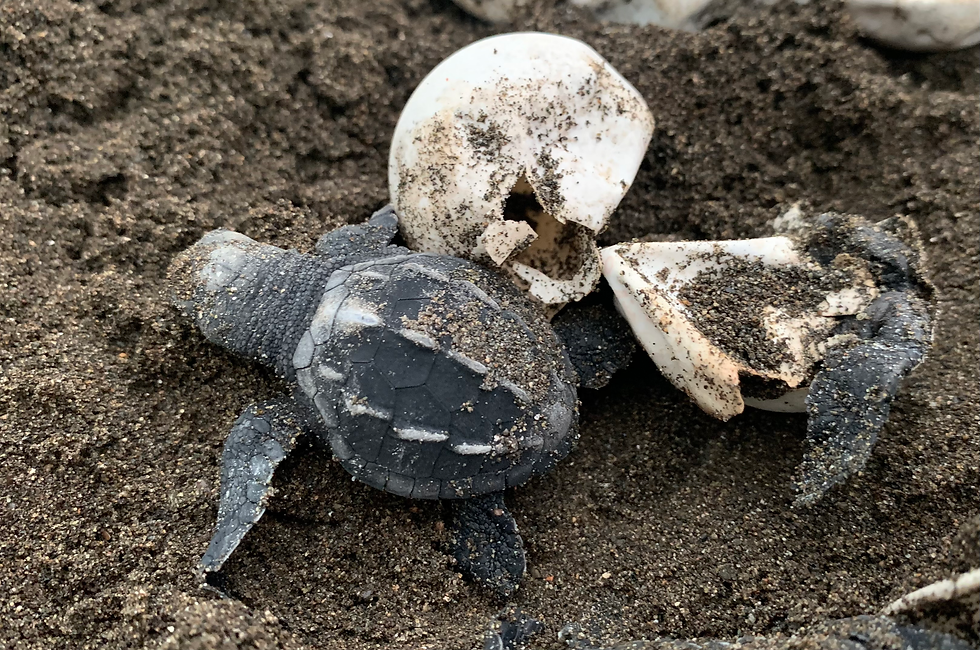Turtles - baby monitors, nerds, and infographics
- Inga Gusarova
- Nov 13, 2022
- 3 min read
Two new fascinating resources on sea turtle conservation are now available.
Turtle Sense baby monitor. Well, technically, it's an egg hatching activity sensor, but come on, turtle baby monitor sounds better.
Let's say you found and relocated your turtle nests. Now, you are waiting for the eggs to hatch so you can help the babies out to the beach, before coatis or vultures help themselves. In practice, it means intuiting by the shape of the sand whether something has shifted underneath. Every day for several weeks after about 40 days (most species take about 45-70 days - and it varies by conditions and temperature). If you are too late or too early, you will likely end up with many dead baby turtles.
You'd hope a better method existed, right?

An interdisciplinary team of amazing committed self-identified nerds designed a sensor to monitor baby turtle activity. This Conversation article reports on the project:
"...We found that by placing a simple sensor disguised as a turtle egg in the nest, we could detect activity in the nest that indicated when the baby turtles would emerge from the sand and swarm toward the water."
"...Participants included Eric Kaplan, the man I met on the beach and the founder of the Hatteras Island Ocean Center; David Hermeyer and Samuel Wantman, retired engineers at the San Francisco nonprofit Nerds Without Borders; IBM master inventor Thomas Zimmerman; and veterinary student Joshua Chamberlin. As a developmental neuroscientist, I worked to understand how the baby turtles might use motion or vibrations to coordinate nest activity. [Erin Clabough, Associate Professor of Psychology, University of Virginia]"
The sensors appear designed to be somewhat "do-it-yourself". That is, plans for sensor construction should be open source and freely accessible here (on a website, very appropriately named Nerds without Borders. I think I am in love). Which means they should not be hard to make. Looks like the sensor itself fits inside a ping-pong ball, to look like an turtle egg! However, so far it seems like work in progress: Currently, the site says "All the design information will be available to the public on the wiki" - but I could not find it yet.

2. Infographic exhibition of Costa Rican turtles
Most people in this world are not lucky enough to see turtles directly on the beach. If that applies to you, there is a new infographic:"According to the ICT, this infographic is the most extensive and detailed that has been carried out to date".
It is developed by a cooperation between Costa Rican Institute of Tourism and SINAC experts. It is downloadable. And has tremendous amount of images and information on all five sea turtle species present in Costa Rica (by the way, only seven species in the world - and yes, Costa Rica has five of them).
Unfortunately, access to the infographic itself is a perfect illustration of systemic problems with many Costa Rican initiatives. It was lovingly created for an English-language audience. Also by enthusiastic nerds, judging by the incredible amount of detail. (Nerds of the world, unite!) But try actually finding it.
The news article about it does not link to it. After a long search I located what seems to be the relevant page - yet it returns a 404 at the time of posting. Eventually, I simply found a general page for infographics on the Institute of Tourism site:
In addition to turtles, it has birds of prey and humpback whales. The turtles one is indeed very thorough. Just plan ahead to wait for it to load.







Comments